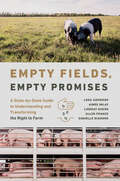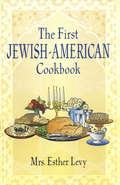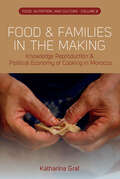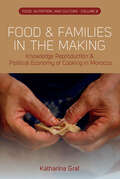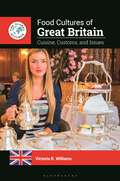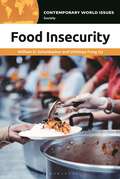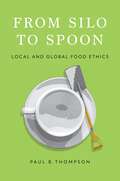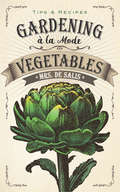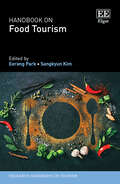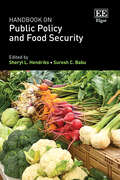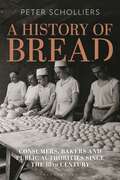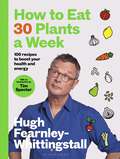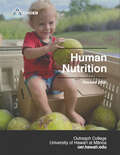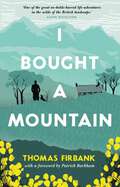- Table View
- List View
Empty Fields, Empty Promises: A State-by-State Guide to Understanding and Transforming the Right to Farm (Rural Studies Series)
by Loka Ashwood Danielle Diamond Allen Franco Aimee Imlay Lindsay KuehnThe right to farm is essential to everyone's survival. Since the late 1970s, states across the nation have adopted so-called right-to-farm laws to limit nuisance suits loosely related to agriculture. But since their adoption, there has yet to be a comprehensive analysis of what these laws do and who they benefit. This book offers the first national analysis and guide to these laws. It reveals that they generally benefit the largest operators, like processing plants, while traditional farmers benefit the least. Disfavored most of all are those seeking to defend their homes and environment against multinational corporations that use right-to-farm laws to strip neighboring owners of their property rights. Through what the book calls the "midburden," right-to-farm laws dispossess the many in favor of the few, paving the path to rural poverty. Empty Fields, Empty Promises summarizes every state's right-to-farm laws to help readers track and navigate their local and regional legal landscape. The book concludes by offering paths forward for a more distributed and democratic agrifood system that achieves agricultural, rural, and environmental justice.
The First Jewish-American Cookbook
by Esther LevyA remarkable culinary and historical document that offers housekeeping and domestic management advice, as well as daily menu suggestions, a Jewish calendar, and a selection of medical and household recipes. Delicious and economical, the recipes feature ingredients readily available to modern cooks, with instructions that are abundantly clear.
Food and Families in the Making: Knowledge Reproduction and Political Economy of Cooking in Morocco (Food, Nutrition, and Culture #8)
by Katharina GrafEven in the context of rapid material and social change in urban Morocco, women, and especially those from low-income households, continue to invest a lot of work in preparing good food for their families. Through the lens of domestic food preparation, this book looks at knowledge reproduction, how we know cooking and its role in the making of everyday family life. It also examines a political economy of cooking that situates Marrakchi women’s lived experiences in the broader context of persisting poverty and food insecurity in Morocco.
Food and Families in the Making: Knowledge Reproduction and Political Economy of Cooking in Morocco (Food, Nutrition, and Culture #8)
by Katharina GrafEven in the context of rapid material and social change in urban Morocco, women, and especially those from low-income households, continue to invest a lot of work in preparing good food for their families. Through the lens of domestic food preparation, this book looks at knowledge reproduction, how we know cooking and its role in the making of everyday family life. It also examines a political economy of cooking that situates Marrakchi women’s lived experiences in the broader context of persisting poverty and food insecurity in Morocco.
Food Cultures of Great Britain: Cuisine, Customs, and Issues (The Global Kitchen)
by Victoria R. WilliamsThere's far more to British food than fish and chips. Discover the history and culture of Great Britain through its rich culinary traditions.Part of the Global Kitchen series, this book takes readers on a food tour of Great Britain, covering everything from daily staples to holiday specialties. In addition to discovering Great Britain's long culinary history, you'll learn about recent trends, foreign influences, and contemporary food and dietary concerns, such as obesity and the impacts of climate change. Chapters are organized thematically, making it easy to focus in on particular courses or types of dishes. The main text is supplemented by sidebars that offer interesting bite-sized facts, a chronology of important dates in British culinary history, and a glossary of key food- and dining-related terms.When people outside Great Britain think of British cuisine, they likely envision iconic foods and traditions such as fish and chips, a full English breakfast, and afternoon tea. But Great Britain has a much richer and more diverse culinary history. It has been shaped by a myriad of events, from invasions by the Romans, Vikings, and Normans to the emergence and expansion of the British Empire to the privations of World War II. In more recent times, Great Britain's departure from the European Union, the global Covid-19 pandemic, and Russia's invasion of Ukraine have all had a significant impact on the food landscape of Great Britain.
Food Insecurity: A Reference Handbook (Contemporary World Issues)
by William D. Schanbacher Whitney Fung UyThis comprehensive and authoritative one-stop resource examines the issue of food insecurity in the United States, including the various economic, social, political, and cultural factors that drive the problem.Social welfare agencies, schools, food banks, and other organizations have all put forth efforts to combat food insecurity, but it remains a serious risk for millions of poor Americans today. Food Insecurity: A Reference Handbook examines the reasons why food insecurity remains such a longstanding problem in American society.Beginning with a history of food insecurity from the country's origins to the present day, the book also delves into the problems and controversies related to food insecurity, such as urban food deserts, substance abuse impacts, nutrition education, and income inequality. One of the most valuable aspects of the book is that it surveys the history of food insecurity in a manner that helps the reader identify key issues in an easy-to-understand fashion. The book's Perspectives chapter presents a broad range of voices on various facets of food insecurity, providing crucial, diverse perspectives to round out the coverage and expertise of the authors.
Fries (Large Print)
At the centre of the page is a picture of a packet of fries. There is a locator dot shown, which will be at the top left of the page when the image is the correct way up. At the top of the picture are the fries. They are sticking up from the cardboard packet below. Can you count how many there are? The packet has a diamond shaped decoration on it.
Fries (UEB Contracted)
At the centre of the page is a picture of a packet of fries. There is a locator dot shown, which will be at the top left of the page when the image is the correct way up. At the top of the picture are the fries. They are sticking up from the cardboard packet below. Can you count how many there are? The packet has a diamond shaped decoration on it.
Fries (UEB Uncontracted)
At the centre of the page is a picture of a packet of fries. There is a locator dot shown, which will be at the top left of the page when the image is the correct way up. At the top of the picture are the fries. They are sticking up from the cardboard packet below. Can you count how many there are? The packet has a diamond shaped decoration on it.
From Silo to Spoon: Local and Global Food Ethics
by Paul B. ThompsonFollowing the pattern of From Field to Fork (OUP, 2015) Paul B. Thompson provides a highly readable and up-to-date analysis of contemporary ethical issues connected with food. Thompson reinterprets Peter Singer's work on famine relief in light of the history of funding development assistance through food aid, defends locavore diets against philosophical critics, and analyzes the ethics of food labeling in light of J.S. Mill's On Liberty. Further exploring today's key ethical questions about food, Thompson compares anthropological and toxicological approaches to pollution and defends a revised notion of agricultural sustainability. These topics provide an entry point for a novel approach in practical ethics that blends pragmatist philosophy of language, historical interpretation of agrarian thought, and recent philosophical writings on race and structural racism.
Gardening à la Mode: Vegetables
by Harriet Anne De SalisWhat's the best way to protect vegetables from frost? How do you dry herbs and banish slugs? There's much to learn about making the most of your backyard vegetable garden, and this handy little guide is brimming with advice for novice gardeners. Written by a popular magazine columnist of the nineteenth century, these timeless suggestions offer straightforward guidance for every step of the way, from planting, watering, and fertilizing to cooking and preserving your homegrown produce.Author Harriet Anne de Salis was an expert at counseling Victorian housewives on the domestic arts, writing commonsense manuals for everything from cooking on a budget to raising poultry and training dogs. This companion volume to Gardening à la Mode: Fruits features alphabetized entries and an index for easy reference. Even seasoned gardeners and cooks are likely to find it a source of useful hints and enduring charm.
Grapes (Large Print)
This is an image of a bunch of purple grapes shown life-sized in the middle of the page. There is a locator dot shown, which will be at the top left of the page when the image is the correct way up. At the top of the page, you can find the main stalk where the bunch of grapes has been cut from the vine. Further down the page, this branches off into the smaller stalks that the oval-shaped fruit hang from.
Grapes (UEB Contracted)
This is an image of a bunch of purple grapes shown life-sized in the middle of the page. There is a locator dot shown, which will be at the top left of the page when the image is the correct way up. At the top of the page, you can find the main stalk where the bunch of grapes has been cut from the vine. Further down the page, this branches off into the smaller stalks that the oval-shaped fruit hang from.
Grapes (UEB Uncontracted)
This is an image of a bunch of purple grapes shown life-sized in the middle of the page. There is a locator dot shown, which will be at the top left of the page when the image is the correct way up. At the top of the page, you can find the main stalk where the bunch of grapes has been cut from the vine. Further down the page, this branches off into the smaller stalks that the oval-shaped fruit hang from.
Handbook on Food Tourism (Research Handbooks in Tourism series)
This Handbook on Food Tourism provides an overview of the past, present, and future of research traditions, perspectives, and concerns about the food tourism phenomenon. Taking a multidisciplinary approach, it contributes to the historical and anthropological understanding of the nexus between food, society, and tourism that underpins the divergent business and marketing efforts in tourism today.Expert contributors from across the globe not only explore the theoretical and conceptual foundations of food tourism research, but also address the significance of the multistakeholder nature of tourism in the context of food tourism development. Chapters present empirical research using quantitative and qualitative methods, conceptual papers and critical literature reviews employing archival research methods and informetric mapping, and analysis of secondary data from social, political, and environmental sources. Rich with information and data about diverse socio-cultural and environmental issues, this Handbook consolidates knowledge on the studies of food tourism from around the world and provides a vision for future research.Covering the breadth of food tourism research, this Handbook will be a fundamental reference work for researchers, academics, and students in tourism management, human geography, social and cultural geography, and business and management. It will similarly appeal to professionals, local authorities, and local food and tourism industries and businesses.
Handbook on Public Policy and Food Security
The Handbook on Public Policy and Food Security provides multi-disciplinary insights into food security analysis across the Sustainable Development Goals (SDGs). As food security is an essential outcome and a part of sustainable and healthy food systems, this Handbook addresses the urgent need to provide a comprehensive overview of the field’s current developments.Paired chapters focuses on a specific SDG in turn, presenting an overview and using qualitative and quantitative methodological approaches to assess the impact of food security on the attainment of the specific goal, and the evaluation of the impact of the goal on food security. This Handbook brings together experts in the field who advocate for a food systems approach, highlighting how various components of a food system function together to achieve the goal of food security for all. The cross-policy themes covered extend beyond the SDGs, proving relevant for public policy and food security in the foreseeable future. This erudite Handbook will be highly informative for academics, researchers and students in agricultural economics, development studies, human geography, human rights and comparative social policy. It will also be beneficial for professionals working in public policy, NGOs and multilateral organisations who are interested in understanding food security and nutrition monitoring.
A History of Bread: Consumers, Bakers and Public Authorities since the 18th Century (Food in Modern History: Traditions and Innovations)
by Peter ScholliersFor a long time, everything revolved around bread. Providing more than half of people's daily calories, bread was the life-source of Europe for centuries. In the middle of 19th century, a third of household expenditure was spent on bread. Why, then, does it only account for 0.8% of expenditure and just 12% of daily calories today?In this book, Peter Scholliers delves into the history of bread to map out its defining moments and people. From the price revolution of the 1890s that led to affordable and pure white bread, to the taste revolution of the 1990s that ushered in healthy brown bread, he studies consumers, bakers and governments to explain how and why this food that once powered an entire continent has fallen by the wayside, and what this means for the modern age. From prices and consumption to legislation and technology, Scholliers shows how the history of bread has been shaped by subtle cultural shifts as well as top-down decisions from ruling bodies. From the small home baker to booming factories, he follows changes in agriculture, transport, production and policy since the 19th century to explain why bread, once the centre of everything, is not so today.
How and When to Be Your Own Doctor
by Isabelle A. Moser Steve SolomonDr. Isabelle A. Moser and Steve Solomon collaborated on How and When to Be Your Own Doctor. When Solomon reached his late thirties, he began looking for healthy alternatives. He met Moser and began the practice of a yearly fast to cleanse his body. This book contains their combined knowledge on healing. Topics include How I Became a Hygienist, The Nature and Cause of Disease, Fasting, Colon Cleansing, Diet and Nutrition, Vitamins and Other Food Supplements and The Analysis of Disease States--Helping the Body Recover.
How to Eat 30 Plants a Week: 100 recipes to boost your health and energy
by Hugh Fearnley-Whittingstall'I love the way Hugh inspires us to eat more of the good stuff, and he's done it again brilliantly here.' JAMIE OLIVER'Hugh translates the exciting science of the gut microbiome into something practical and easy. His beautifully diverse, plant-rich recipes are good for us and for the planet.' POPPY OKOTCHAWith an introduction by Tim Spector, bestselling author and founder of ZOE30 plants may sound a lot, but in Hugh's expert hands it feels like an easy win, for the delicious meals as much as the incredible health benefits. Central to these is great gut health, and a foreword by gut-health guru Tim Spector explains why Hugh is bang on target to deliver the goods. And in racking up the plant power, you'll feel great, have renewed energy and reset your microbiome. In chapters such as Six-packed Soup and Stoups, Seven in the Oven, Fish Fivers, Meat and Many Veg Mains and Triple Treat Sides, Hugh shows you how to get many more plants on your plate, with people-pleasing plant-only dishes at the fore, as well as some humdingers with a little well-chosen meat or fish along for the ride. By plants, Hugh means fruit and veg and much more besides – including nuts, seeds, pulses, grains, herbs, spices, chocolate and even coffee.Recipes include: · Purple shakshuka· Shroomami stoup· Sichuan aubergine with tofu and black beans· Caponata with chickpeas and apricots· Tomato and saffron baked rice· Slow-roast Merguez-spiced shoulder of lamb· Steak, charred lettuce and spring onion salsa· Roast ratatouille mackerel fillets· Kimchi (or Kraut) slaw· Very berry ripple fro-yo... and many more!With plant ingredients numbered by chapter, and overlaps kept to a minimum, it's easy to keep a count and rack up your weekly plant score. Simply by choosing just a handful of recipes from the book, you will have nailed your 30 plants, and by adding an extra main, a treat or a pud, and a snack or a side, you'll be well on your way to 50 plants a week! With Hugh to show you the way, this isn't just going to be doable: it's going to be easy, it's going to be fun, and most of all it's going to be delicious.
How to Kiss Goodbye to Ana: Using Eft In Recovery From Anorexia
by Kim MarshallDo you struggle with Ana (anorexia) or have a difficult relationship with food and body image? Emotional Freedom Techniques (EFT) have the potential to transform your life and put you on the path to recovery. Here, honest diary extracts relay Kim Marshall's own struggles with anorexia and bulimia, including time spent in a residential treatment centre, and how she discovered EFT and learned to quiet the negative voices that were blocking her recovery. Now fully-recovered and a certified EFT practitioner, Kim explains how to use the approach as a self-help tool. Including easy-to-follow EFT scripts and positive mantras to help you stay on the path to recovery, Kim explains how to use EFT to help overcome denial and fears about recovery from anorexia. This candid account of recovery from eating disorders shows how it is possible to deal with underlying emotional issues and achieve a more positive mindset.
Human Nutrition
by University of Hawai‘i at Mānoa Food ScienceThis textbook serves as an introduction to nutrition for undergraduate students and is the OER textbook for the FSHN 185 The Science of Human Nutrition course at the University of Hawai'i at Mānoa. The book covers basic concepts in human nutrition, key information about essential nutrients, basic nutritional assessment, and nutrition across the lifespan. <p><p>Revised 2022
I Bought a Mountain
by Thomas FirbankWITH A FOREWORD BY PATRICK BARKHAMAnd an essay by Welsh hill farmer, Dafydd Morris-Jones'I first saw Dyffryn in a November gale... the old house was quivering under the thrusts of the wind, and the wild, remote setting had already captured my fancy, and I will hold it till I die.'So begins the remarkable story of a 21-year-old man who, with no experience in agriculture, visited a sheep farm on a near barren Welsh mountainside in 1931 and that same day bought all 2,400 acres along with its 3000 sheep for £5,000.Set amidst the rugged grandeur of Snowdonia, I Bought a Mountain follows the struggles and triumphs of this impulsive but hard-working man and his every-bit-as-tough wife, Esme, as they fight to build the farm into prosperity.Firbank's writing is guileless and immediate and ruthlessly honest. His paean to the traditional, Welsh hill-farming way of life, transports you to a disappearing world, one ruled by the age-old rhythms of work, weather, livestock and a love of the land, and offers precious insights into conservation and sustainability.
Kitchen knives (Large Print)
This is an image of three kitchen knives. The blades are pointing towards the top of the page and the handles are at the bottom. There is a locator dot shown, which will be at the top left of the page when the image is the correct way up. There are two rivets on each knife handle to secure them to the blade. The sharp edges are to the right of each knife.Test your tactile skills: - Can you find the bread knife with the serrated edge blade?- Find the small paring knife.- Which is the longest knife, the bread knife or the chef's knife on the right of the page?
